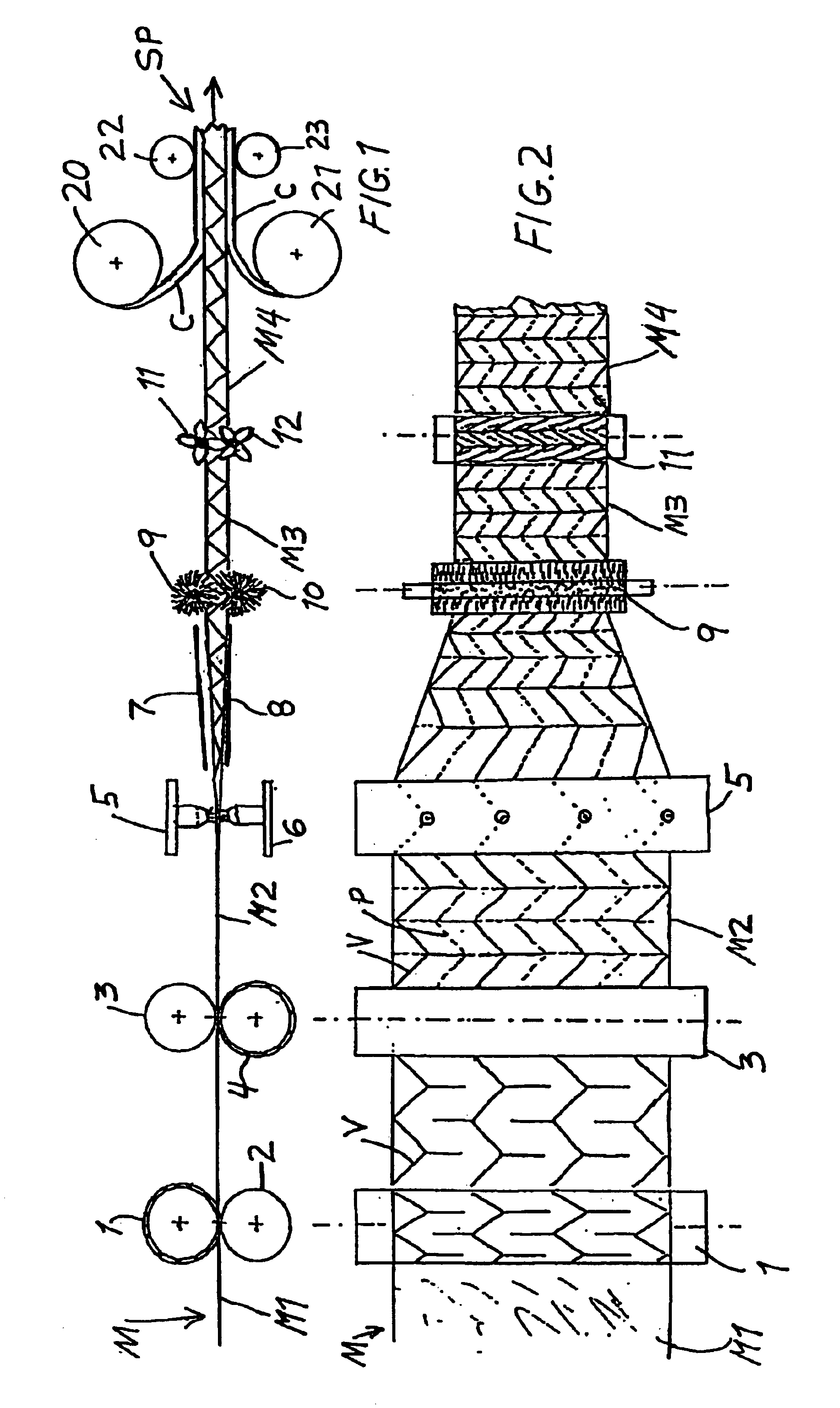Method and apparatus for producing a composite structural panel with a folded material core
a composite structural and core technology, applied in paper/cardboard articles, constructions, building components, etc., can solve the problems of difficult control and cost of realizing mechanical apparatus, and achieve the effects of improving compressive stiffness and strength, good bonding connection, and expanding the field of application
- Summary
- Abstract
- Description
- Claims
- Application Information
AI Technical Summary
Benefits of technology
Problems solved by technology
Method used
Image
Examples
first embodiment
[0036]FIGS. 1 and 2 schematically show an apparatus according to the invention for carrying out the method according to the invention. Namely, the apparatus shown in FIGS. 1 and 2 is for producing a composite structural panel SP including a core structure sandwiched and bonded between two cover layers C. The core structure is produced by folding a material web M, for example of paper or cardboard or resin-impregnated fiber. In the present embodiment, the folding process is a single stage folding process involving a transverse contraction, a longitudinal contraction, and a thickness expansion of the material web M occurring simultaneously. In this folding process, first, fold lines are formed in the initially flat planar configuration M1 of the material web M, and then fold valleys V, shown by solid lines, and fold peaks P, shown by dashed lines, are formed in the material web along the respective associated fold lines.
[0037]More particularly, the apparatus includes a first structure...
second embodiment
[0045]FIGS. 3 and 4 show an apparatus and method for forming a folded core structure (which can then further be used to form a composite structural panel as described above). The apparatus and process of FIGS. 3 and 4 have much overlap and correspondence with those of FIGS. 1 and 2, and a redundant description of the corresponding components and process steps will be omitted. The same reference numbers are used to identify corresponding features in the embodiment of FIGS. 3 and 4 as in the embodiment of FIGS. 1 and 2.
[0046]The main difference between the first embodiment of FIGS. 1 and 2 and the second embodiment of FIGS. 3 and 4 is that the first embodiment involves a single-stage total compound folding process, while the second embodiment involves a two-stage folding process with a transverse contraction and thickness expansion in a first stage followed by a longitudinal contraction in a second stage. In this regard, the apparatus of FIGS. 3 and 4 comprises an additional of a pair...
PUM
 Login to View More
Login to View More Abstract
Description
Claims
Application Information
 Login to View More
Login to View More - R&D
- Intellectual Property
- Life Sciences
- Materials
- Tech Scout
- Unparalleled Data Quality
- Higher Quality Content
- 60% Fewer Hallucinations
Browse by: Latest US Patents, China's latest patents, Technical Efficacy Thesaurus, Application Domain, Technology Topic, Popular Technical Reports.
© 2025 PatSnap. All rights reserved.Legal|Privacy policy|Modern Slavery Act Transparency Statement|Sitemap|About US| Contact US: help@patsnap.com



